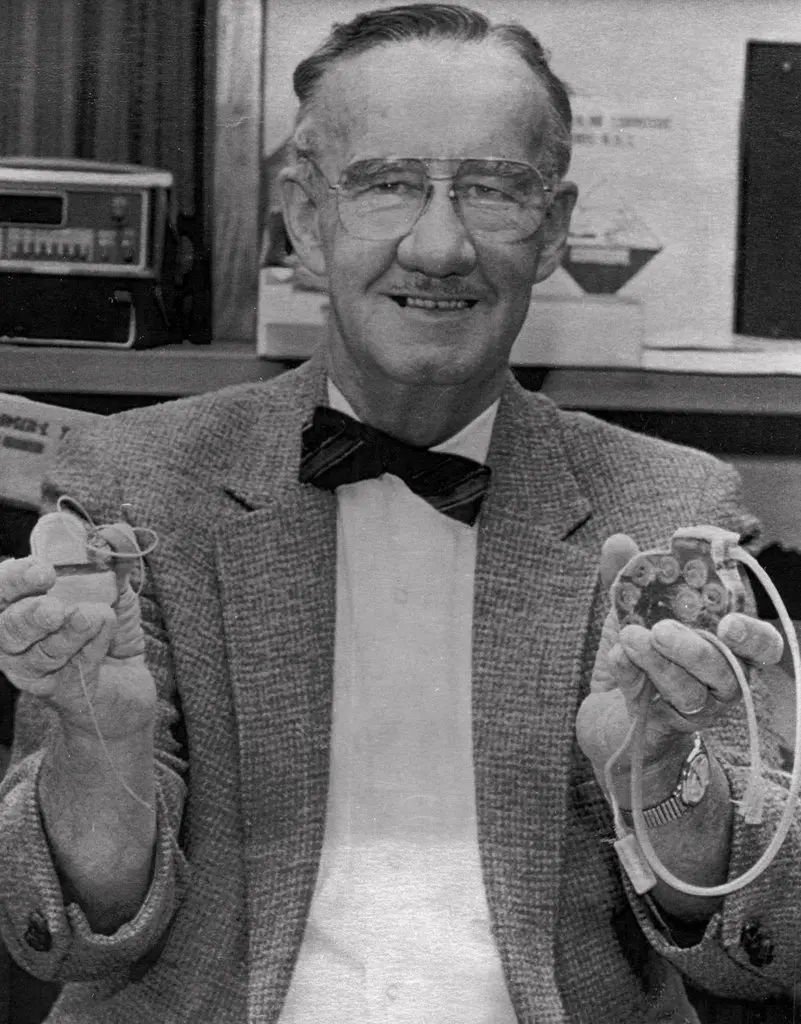
Quite by accident, American engineer Wilson Greatbatch invented the implantable cardiac pacemaker in the year 1958. Read on to know how….
An artificial pacemaker is a small battery-operated electronic device that’s placed under the skin in the chest to help control the heartbeat. The first successful implantable pacemaker was invented in 1958 by an American electrical engineer, Wilson Greatbatch. He was making a heart rhythm recorder when, by mistake, he added a wrong electronic component. He was shocked when the device, instead of simply recording the sound of the heartbeat, produced electronic pulses quite similar to the sounds made by a healthy heart.
It struck him then that the device could make an unhealthy heart beat in rhythm by delivering electrical pulses to make the heart muscles contract and pump blood. For two years he worked on modifying the device. He miniaturised it, coated it with a kind of resin to prevent it from getting damaged by body fluids, and powered it with a mercury-zinc battery.
Greatbatch discussed his invention with surgeon William Chardack, whom he met in a chance encounter. In 1960, the Chardack-Greatbatch pacemaker was implanted in an elderly man with an irregular heartbeat. The patient’s life was extended by 18 months.
Pacemakers today are about the size of a bullet. They are encased in titanium and keep the heart ticking with regular beats through computer-guided electrical pulses. They are inserted through the leg up into the right ventricle. Their batteries can last from 5 to 15 years.
Picture Credit : Google




